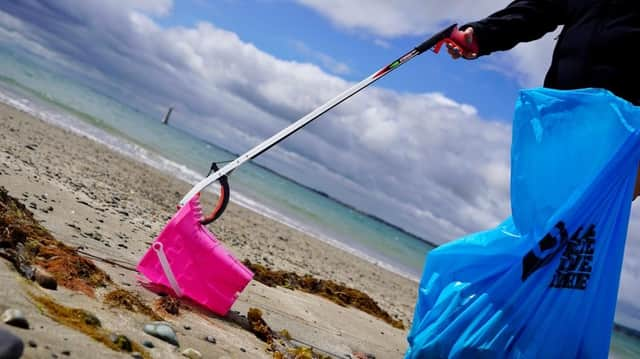90% of beach litter made from plastic


The Marine Litter Report, which enters its 10th year in 2023 and is funded by the Department of Agriculture, Environment and Rural Affairs (DAERA), shows that the average number of litter items present per 100 metres of beach surveyed last year was 542, down from a record-breaking 752 in the previous year.
There was less progress, however, on the issue of plastics at coastal locations, which reached an all-time high of 90% of all litter recorded. Overall, 26,002 items of litter were detected on beaches surveyed in 2022.
Advertisement
Advertisement
Dr Ian Humphreys, CEO of Keep Northern Ireland Beautiful said: “Although we found less litter on our beaches in 2022, we are clear that this is no reason for celebration or a sign that we are yet on the right path. The reality is that the 2022 data is our fourth worst on record, and there is still simply too much litter polluting and pulling down our marine spaces.
“We are particularly alarmed that plastic pollution has now reached a peak of 90% of all litter that we encountered on our reference beaches. After 10 years of conducting these surveys, this is the biggest indication yet that we need to get serious about phasing out plastics, if we want to protect our marine environment and wider planet from the destructive effects of litter.”
DAERA Permanent Secretary Katrina Godfrey said: “I would like to thank KNIB, the volunteers and partner organisations for their co-operation in working on beach cleans over many years. We can now see trends over the last decade to help us target action going forward.
"We all have a responsibility to reduce our litter footprint and protect our environment and ensure that Northern Ireland is a great place to live in or to visit.
Advertisement
Advertisement
"The Department continues to provide funding to encourage innovative projects aimed at how to prevent litter entering Northern Ireland’s marine environment and over £170k has been made available for the Marine Litter Capital Grants Scheme in 2023-24.
"The Department also provides significant funding to KNIB through the Environmental Fund (£800k this financial year) to promote behavioural change and environmental awareness."
Other findings made available in the Marine Litter Report include the contents of the ‘Terrible Ten’ most commonly observed litter culprits across beaches, which is dominated by plastic and polystyrene fragments sized under 2.5cm. Spring is also revealed as the most frequent season for sightings of litter at shore, with 7,894 items noted during this part of the year alone in 2022.
One area of litter that did see a significant reduction was the number of heavy-duty gloves that washed up on land. Compared with the previous year’s data, the publication discloses that jettison from fishing-industry PPE dropped by 65% in 2022, falling from 1,012 to 660.
Advertisement
Advertisement
The Marine Litter Report is an annual survey of 12 beaches around Northern Ireland’s coasts that are assessed by a team of trained operatives during the four seasons of the year. Drawing on the international OSPAR methodology, the results from each survey are added to a central database of 15 governments and the EU cooperate to protect the marine environment of the North-East Atlantic.
Read the Marine Litter Report at www.keepnorthernirelandbeautiful.org/marinelitter.